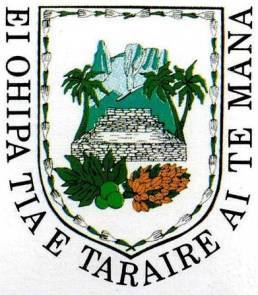Papeete: Difference between revisions
Jump to navigation
Jump to search
Knorrepoes (talk | contribs) m (Text replacement - "{{fr}}" to "") |
Knorrepoes (talk | contribs) m (Text replacement - "{| class="wikitable"↵|+Official blazon↵|-↵|'''French'''↵| {{blazon wanted}}↵|-↵|'''English''' ↵| {{blazon wanted}}↵|}" to "{| class="wikitable" |+Official blazon |- |'''French''' | blazon wanted |- |'''English''' | blazon wanted |}") |
||
| Line 9: | Line 9: | ||
|- | |- | ||
|'''French''' | |'''French''' | ||
| | | blazon wanted | ||
|- | |- | ||
|'''English''' | |'''English''' | ||
| | | blazon wanted | ||
|} | |} | ||
Revision as of 08:43, 6 April 2023
PAPEETE
| French | blazon wanted |
| English | blazon wanted |
Origin/meaning
The arms were officially granted on August 26, 1968.
The arms show seven elements.
The back part shows the 'Diadème' mountain (1321 m) and the Marae, an ancient temple or holy place. The fruits are the 'uru' the fruit of the palm tree, which is important for the local economy, and the 'fel', another fruit. The palm trees are typical for the tropical island.
The bordure consists of Gardenia flowers.
The motto "Ei ohipa tia e taraire ai te mana" means means “Integrity is the Warrant of Power”.
Literature: Papeete to tatou oire 01-05-1995.
